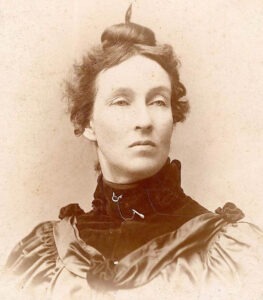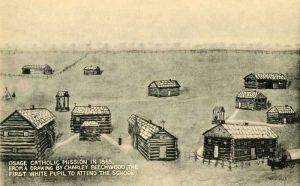Mary Elizabeth Lease was a lawyer, author, speaker, and activist in Kansas.
She was born Mary Clyens to Irish immigrant parents in Ridgway, Pennsylvania, on September 11, 1853. She was educated at St. Elizabeth’s Academy, Allegany, New York, and at the age of 20, she came to Kansas to teach school in the Osage Mission in Neosho County.
On January 30, 1873, she married Charles L. Lease, a local pharmacist, at the Osage Mission. The couple would eventually have four children. After unsuccessful farming ventures in Kingman County, Kansas, and Texas, the Lease family moved to Wichita, where Mary Elizabeth took on a leading role in civic and social activities.
She was admitted to the Kansas bar in 1885. In 1888, she made her first public political speech at a union labor convention, and two years later, she made over 160 speeches in Kansas for the Farmers’ Alliance, attracting wide attention with her radical words.
She was appointed president of the State Board of Charities, being the first woman in the United States to hold such a position. By 1890, her involvement in the growing revolt of Kansas farmers against high mortgage interest and railroad rates had placed her at the forefront of the People’s (Populist) Party. She traveled throughout Kansas, the West, and the South for the cause. She was a powerful and emotional speaker. Emporia editor William Allen White, who did not share her political views, wrote on one occasion that “she could recite the multiplication table and set a crowd hooting and harrahing at her will.”
She was one of the orators on “Kansas Day” at the Columbian Exposition in Chicago, Illinois in 1893; represented Kansas at the National Conference of Charities and Corrections the same year, and was vice-president of the World’s Peace Congress.
By 1896, she had become alienated from the Populist Party and focused on personal interests. In 1902, she divorced her husband and soon moved to New York. She wrote for several magazines and was the author of “The Problem of Civilization Solved.” She spent the rest of her life with one or another of her children in the East.
She died in 1933.
Compiled and edited by Kathy Alexander/Legends of Kansas, updated April 2024.
Also See:


